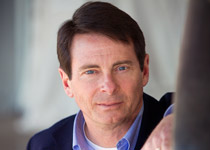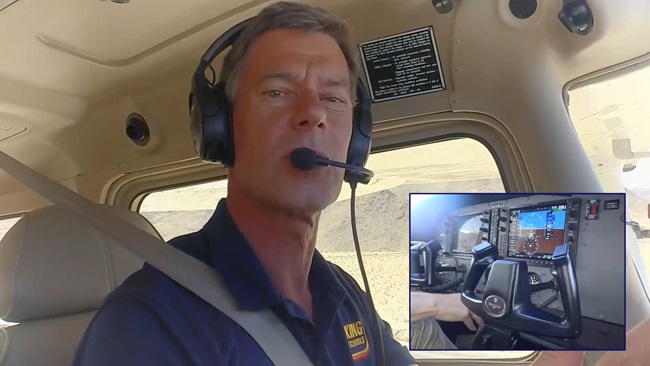 Every pilot understands the significance of December 17, 1903—the date the Wright brothers first managed controlled, sustained, powered flight. Wilbur Wright’s 59-second flight off the sand dunes at Kill Devil Hills, North Carolina, at the end of the day cemented their place in history, an understandable point of pride for all those who live in the Tar Heel State, even though the bicycle builders hailed from the Buckeye State.
Every pilot understands the significance of December 17, 1903—the date the Wright brothers first managed controlled, sustained, powered flight. Wilbur Wright’s 59-second flight off the sand dunes at Kill Devil Hills, North Carolina, at the end of the day cemented their place in history, an understandable point of pride for all those who live in the Tar Heel State, even though the bicycle builders hailed from the Buckeye State.
Just two weeks before the 100th anniversary of that flight, Honda Aircraft also made history in North Carolina when it flew its proof-of-concept HondaJet off the runway at Greensboro. The flight kicked off a dozen-year project to bring the innovative business jet to certification and first deliveries. December is a good month for aviation firsts in North Carolina. On December 9, 2015, FAA Administrator Michael Huerta handed over the HondaJet type certificate to Honda Aircraft CEO and President Michimasa Fujino, ending a 30-year quest by the aircraft designer to usher the famed automaker into the aviation market. The company planned to deliver its first airplane later in the month, allowing Honda to join an elite group of companies that started from scratch to build jet airplanes.
By my count, only three—and arguably only one company—achieved that status in the past half-century. Most would count Lear Jet Corp. as the first, delivering its first Learjet 23 in 1964. However, the Learjet concept was based on the FFA P–16 Swiss ground-attack fighter aircraft, although looking at the fighter you’ll have a tough time seeing the resemblance—beyond the wings with the signature tip tanks. So, if the criterion is an all-new company to build an all-new jet, Lear Jet may or may not qualify—you decide. I think I might know how Bill Lear would vote.
Another likely member of the elite club is Eclipse Aviation, now Eclipse Aerospace. Founder Vern Raburn poured his heart and soul—and more than $1 billion of OPM, other people’s money—into the project that resulted in the Eclipse 500 very light jet. Certified in 2006, the Eclipse 500 was off to a slow start and the company went into bankruptcy in 2008, emerging in 2009 as Eclipse Aerospace. I say “likely member” because even the Eclipse 500 was inspired by the Williams V-Jet II, designed by Scaled Composites. The jet Raburn ultimately brought to market bore almost no resemblance to the Williams airplane, but the tiny V-jet certainly led to the creation of the Eclipse company.
So given that, Honda Aircraft is arguably the only company in the past 50 years with no aircraft-building legacy to design and certify an all-new jet.
I never had the opportunity to meet Bill Lear, but I’ve spent quite a bit of time with Raburn and interviewed Fujino numerous times—and the two contemporaries couldn’t be more different. Raburn, who now works for Google in its drone business, is opinionated, controversial, flamboyant, and seldom without comment. Fujino, meanwhile, is soft-spoken, shy, and self-deprecating. Both are amazingly smart. And I am grateful to both of them for allowing me to be the first to tell their stories.
In the spring of 2005, Raburn invited me to his Albuquerque headquarters to be the first person who didn’t work for the company or the FAA to fly his airplane, which was still in the Experimental category. The “exclusive first look” at the Eclipse 500 made the cover of this magazine’s July 2005 issue.
At about the same time, I received a call from a contact at Honda Aircraft inviting me to Greensboro to be the first to interview Fujino and to share his detailed HondaJet research with the world. The “exclusive first look” was the August 2005 cover story. To that point, the company had kept the details of the airplane under wraps, barely admitting that it existed even though it had flown more than 18 months earlier. My greatest memory of that day was the air-to-air photo mission. I was flying my Bonanza A36 as the photo platform while the Honda test pilots flew the proof of concept. AOPA Senior Photographer Mike Fizer was shooting out of the back of the Bonanza while Fujino sat in the right seat next to me, clearly delighted to see his beautiful blue-and-white creation in flight. He used a small video camera to record the airplane flying over the hills near Greensboro.
All these years later, neither I nor any other member of the media has had the chance to fly the HondaJet, although my flight is planned for the next few weeks now that certification is complete. Look for a story on the flight in an upcoming issue of AOPA Pilot.
Meanwhile, somewhere out there perhaps some young, imaginative—and hopefully patient—designer is noodling a new airframe design that holds great promise. If so, we’re standing by to tell the story.
Email [email protected]
Editor in Chief Tom Haines has been covering the general aviation industry for more than 30 years.



